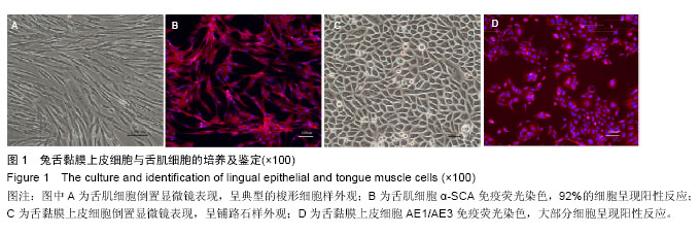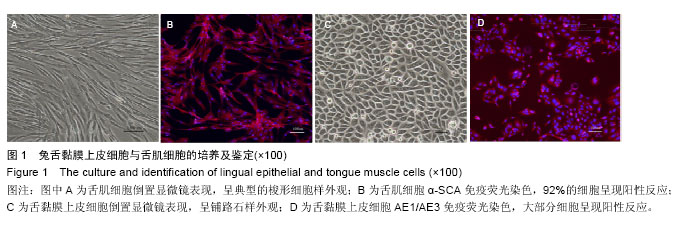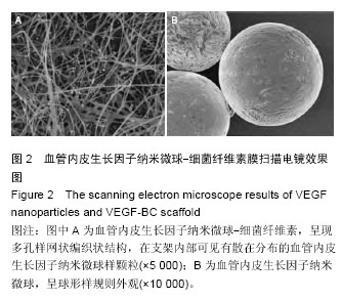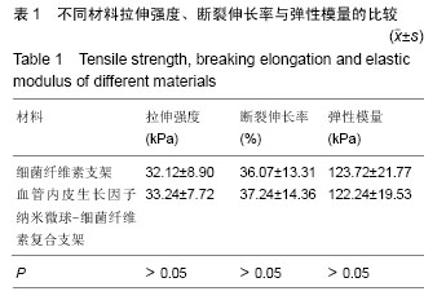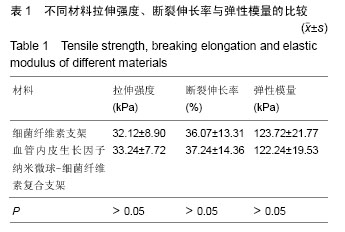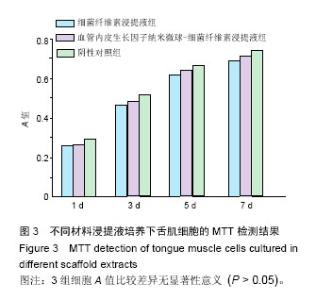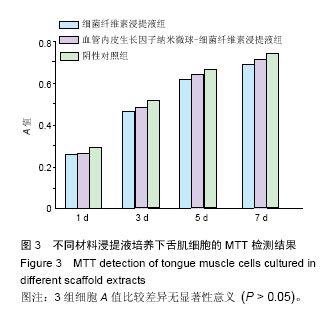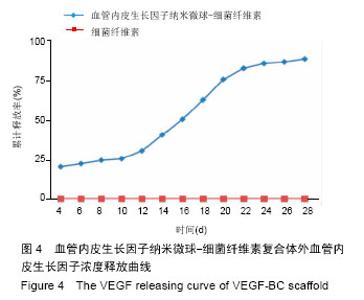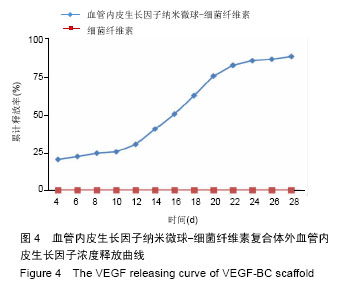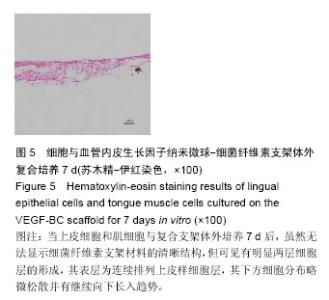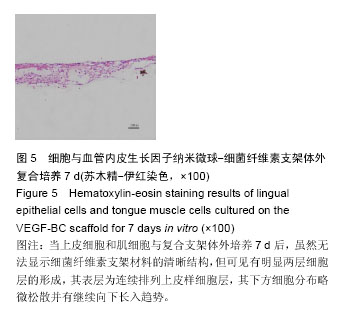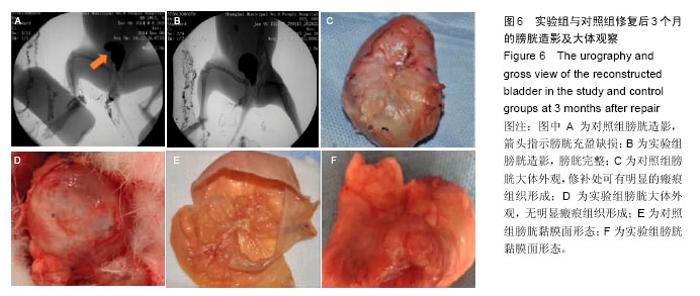Chinese Journal of Tissue Engineering Research ›› 2016, Vol. 20 ›› Issue (21): 3088-3096.doi: 10.3969/j.issn.2095-4344.2016.21.007
Previous Articles Next Articles
Constructing tissue-engineered bladder by vascular endothelial growth factor nanoparticle-bacterial cellulose composite scaffold with various kinds of cells
Zhang Xin-ru, Lu Wen-long, Feng Chao, Lv Xiang-guo, Zhu Wei-dong
- Department of Urology, Shanghai Sixth People’s Hospital of Shanghai Jiao Tong University, Shanghai 200233, China
-
Received:2016-03-29Online:2016-05-20Published:2016-05-20 -
About author:Zhang Xin-ru, M.D., Associate chief physician, Department of Urology, Shanghai Sixth People’s Hospital of Shanghai Jiao Tong University, Shanghai 200233, China
CLC Number:
Cite this article
Zhang Xin-ru, Lu Wen-long, Feng Chao, Lv Xiang-guo, Zhu Wei-dong . Constructing tissue-engineered bladder by vascular endothelial growth factor nanoparticle-bacterial cellulose composite scaffold with various kinds of cells[J]. Chinese Journal of Tissue Engineering Research, 2016, 20(21): 3088-3096.
share this article
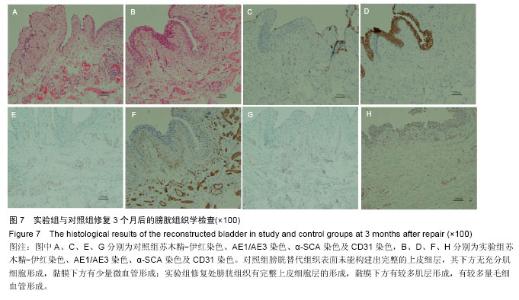
尿动力学检查:在模型制备前,实验组和对照组的膀胱最大容积分别为(69.55±8.68) mL和(66.31± 6.32) mL,植入后3个月,两组的膀胱最大容积均有下降,分别为(58.75±3.14),(50.13±2.42) mL,对照组下降幅度高于实验组(P < 0.05)。在模型制备前,实验组和对照组的漏尿点压力分别为(3.45±0.78),(3.64± 0.52) kPa,植入后3个月的漏尿点压力分别为(3.15± 0.51),(2.67±0.60) kPa,对照组下降幅度高于实验组 (P < 0.05)。 在模型制备前,实验组和对照组的漏尿点压力分别为(3.45±0.78),(3.64±0.52)kPa,植入后3个月的漏尿点压力分别为(3.15±0.51),(2.67±0.60) kPa,对照组下降幅度高于实验组(P < 0.05)。 组织学检查:对照组膀胱替代组织表面未能构建出完整的上皮细层,其下方亦未能够证实有充分肌细胞的形成,同时采用CD31抗体的免疫组织化学染色中,仅见黏膜下方有少量微血管形成。实验组修复处膀胱组织的苏木精-伊红及免疫组织化学切片中可见到有完整上皮细胞层的形成,同时在使用α-SCA抗体的免疫组织化学切片中,可以见到黏膜下方有较多肌层形成,CD31检查可发现有较多量毛细血管形成,见图7。"
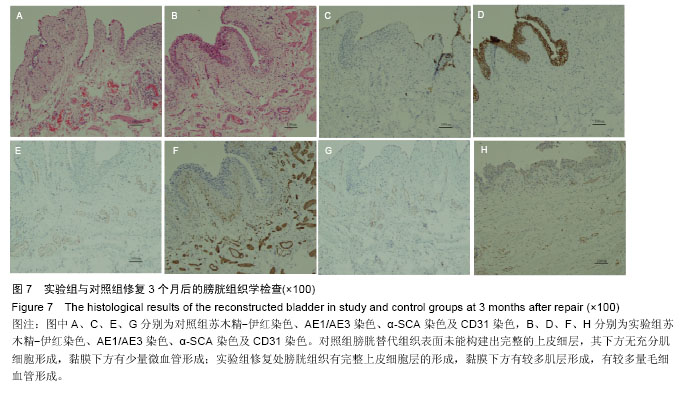
| [1] Oberpenning F,Meng J,Yoo JJ,et al. De novo reconstitution of a functional mammalian urinary bladder by tissue enginnering. Nature Biotechnol. 1999;17:149-155.[2] Atala A,Bauer SB,Soker S,et al.Tissue-engineered autologous bladders for patients needing cystoplasty. Lancet.2006;367:1241-1246.[3] Byung SK,Anthony A,James JY,et al. A collagen matrix derived from bladder can be used to engineer smooth muscle tissue.World J Urol. 2008;26:307-314.[4] Yoo JJ,Meng J,Oberpenning F,et al.Bladder augmentation using allogenic bladder submucosa seeded with cells.Urology. 1998; 51(2):221-225.[5] Zhu WD,Xu YM,Feng C,et al.Different bladder defects reconstructed with bladder acellular matrix grafts in a rabbit model.Urologe. 2011;50:1420-1425.[6] Cheng EY,Kropp BP.Urologic tissue engineering with small—intestinal submucosa:potential clinical applications.World J Urol.2000;18:26-30.[7] Sievert KD,Tanagho EA.Organ specific acellular matrix for reconstruction of the urinary tract.World J Urol.2000;18:19-25.[8] Kropp BP,Sawyer BD,Shannon H E,et al. Characterization of small intestinal submucosa regenerated canine detrusor: assessment of reinnervation, in vitro compliance and contractiIity.J Uro1.1996;156:599-607.[9] Anilkumar TV,Vineetha VP,Revi D,et al. Biomaterial properties of cholecyst-derived scaffold recovered by a non-detergent/enzymatic method.J Biomed Mater Res B Appl Biomater. 2014; 102:1506-1516.[10] Atala A.Tissue engineering of human bladder.Br Med Bull.2011;97:81-104.[11] Record RD,Hillegonds D,Simmons C,et al.In vivo degradation of 14C-labeled small intestinal submucosa (SIS) when used for urinary bladder repair.Biomaterials.2001; 22:2653-2659.[12] Bolland F,Korossis S,Wilshaw SP,et al. Development and characterisation of a full-thickness acellular porcine bladder matrix for tissue engineering. Biomaterials. 2007;28:1061-1070.[13] Zhang Y,Frimberger D,Cheng EY,et al.Challenges in a larger bladder replacement with cell-seeded and unseeded small intestinal submucosa grafts in a subtotal cystectomy model.BJU Int. 2006;98:1100-1105.[14] Pokrywczynska M,Jundzill A,Bodnar M,et al.Do mesenchymal stem cells modulate the milieu of reconstructed bladder wall? Arch Immunol Ther Exp (Warsz).2013;61:483-493.[15] Pokrywczynska M,Adamowicz J,Sharma AK,et al.Human urinary bladder regeneration through tissue engineering -an analysis of 131 clinical cases. Exp Biol Med Maywood NJ.2013;239:264-271.[16] Schaefer M,Kaiser A,Stehr M,et al.Bladder augmentation with small intestinal submucosa leads to unsatisfactory long-term results. J Pediatr Urol. 2013;9:878-883.[17] Atala A,Bauer SB,Soker S,et al.Tissue-engineered autologous bladders for patients needing cystoplasty. Lancet.2006;15:1241-1246.[18] Petrovic V,Stankovic J,Stefanovic V.Tissue engineering of the urinary bladder: current concepts and future perspectives.Scientific World J. 2011;11: 1479-1488.[19] Lam Van Ba O, Aharony S, Loutochin O, et al. Bladder tissue engineering: A literature review.Adv Drug Deliv Rev. 2015; 82-83:31-37.[20] Petersen N,Gatenholm P.Bacterial cellulose-based materials and medical devices: current state and perspectives.Appl Microbiol Biotechnol. 2011; 91(5):1277-1286.[21] Moreira S,Silva NB,Almeida-Lima J,et al.BC nanofibres: in vitro study of genotoxicity and cell proliferation.Toxicol Lett.2009;189(3):235-241.[22] Dugan JM,Gough JE,Eichhorn SJ,et al.Bacterial cellulose scaffolds and cellulose nanowhiskers for tissue engineering.Nanomedicine(Lond). 2013;8(2): 287-298.[23] Esguerra M,Fink H,Laschke MW,et al.Intravital fluorescent microscopic evaluation of bacterial cellulose as scaffold for vascular grafts.J Biomed Mater Res A. 2010;93(1):140-149.[24] Helenius G,Backdahl H,Bodin A,et al.In vivo biocompatibility of bacterial cellulose. J Biomed Mater Res A.2006;76(2):431-438.[25] Brackmann C,Zaborowska M,Sundberg J,et al.In situ Imaging of Collagen Synthesis by Osteoprogenitor Cells in Microporous Bacterial Cellulose Scaffolds. Tissue Eng Part C Methods. 2012;18(3): 227-234.[26] Andersson J,Stenhamre H,Bäckdahl H,et al.Behavior of human chondrocytes in engineered porous bacterial bcellulose scaffolds.J Biomed Mater Res A.2010;94(4): 1124-1132.[27] Sanchavanakit N,Sangrungraungroj W, Kaomongkolgit R, et al.Growth of Human Keratinocytes and Fibroblasts on Bacterial Cellulose Film. Biotechnol Prog.2006;22(4): 1194-1199.[28] Wippermann J,Schumann D,Klemm D,et al. Preliminary Results of Small Arterial Substitute Performed with a New Cylindrical Biomaterial Composed of Bacterial Cellulose. Eur J Vasc Endovasc Surg.2009;37(5):592-596.[29] Zhou L,Yang B,Sun C,et al.Coadministration of plateletderived growth factor-BB and vascular endothelial growth factor with bladder acellular matrix enhances smooth muscle regeneration and vascularization for bladder augmentation in a rabbit model.Tissue Eng A.2013;19:264-276.[30] Youssif M,Shiina H,Urakami S,et al.Effect of vascular endothelial growth factor on regeneration of bladder acellular matrix graft: histologic and functional evaluation. Urology.2005;66:201-207. [31] Chen BS,Xie H,Zhang SL,et al.Tissue engineering of bladder using vascular endothelial growth factor gene-modified endothelial progenitor cells.Int J Artif Organs.2011; 34:1137-1146.[32] Loai Y,Yeger H,Coz C,et al.Bladder tissue engineering: tissue regeneration and neovascularization of HA-VEGF-incorporated bladder acellular constructs in mouse and porcine animal models.J Biomed Mater Res A.2010;15: 1205-1215.[33] Kikuno N,Kawamoto K,Hirata H,et al.Nerve growth factor combined with vascular endothelial growth factor enhances regeneration of bladder acellular matrix graft in spinal cord injury-induced neurogenic rat bladder.BJU Int. 2009;103:1424-1428.[34] Cartwright L,Farhat WA,Sherman C,et al.Dynamic contrast-enhanced MRI to quantify VEGF- enhanced tissue-engineered bladder graft neovascularization: pilot study. Biomed Mater Res A.2006;77:390-395.[35] Xiong Q,Lin H,Hua X,et al.A nanomedicine approach to effectively inhibit contracture during bladder acellular matrix allograft-induced bladder regeneration by sustained delivery of vascular endothelial growth factor.Tissue Eng Part A. 2015; 21(1-2):45-52.[36] Jayo MJ,Jain D,Wagner BJ,et al.Early cellular and stromal responses in regeneration versus repair of a mammalian bladder using autologous cell and biodegradable scaffold technologies.J Urol.2008;180: 392-397.[37] 朱卫东,徐月敏,冯超,等.脂肪干细胞复合膀胱脱细胞基质促进膀胱再生的实验研究[J].中华泌尿外科杂志, 2012,33(2):111-116.[38] Sievert KD,Feil G,Renninger M,et al.Tissue engineering and stem cell research in urology for a reconstructive or regenerative treatment approach.Urologe A. 2007;46(9):1224-1230.[39] Becker C,Jakse G.Stem cells for regeneration of urological structures.Eur Urol. 2007;51(5): 1217-1228.[40] Polykandriotis E,Arkudas A,Horch RE,et al. Autonomously vascularized cellular constructs in tissue engineering: opening a new perspective for biomedical science. J Cell Mol Med.2007;11(1):6-20. |
| [1] | Zhang Tongtong, Wang Zhonghua, Wen Jie, Song Yuxin, Liu Lin. Application of three-dimensional printing model in surgical resection and reconstruction of cervical tumor [J]. Chinese Journal of Tissue Engineering Research, 2021, 25(9): 1335-1339. |
| [2] | Zeng Yanhua, Hao Yanlei. In vitro culture and purification of Schwann cells: a systematic review [J]. Chinese Journal of Tissue Engineering Research, 2021, 25(7): 1135-1141. |
| [3] | Xu Dongzi, Zhang Ting, Ouyang Zhaolian. The global competitive situation of cardiac tissue engineering based on patent analysis [J]. Chinese Journal of Tissue Engineering Research, 2021, 25(5): 807-812. |
| [4] | Wu Zijian, Hu Zhaoduan, Xie Youqiong, Wang Feng, Li Jia, Li Bocun, Cai Guowei, Peng Rui. Three-dimensional printing technology and bone tissue engineering research: literature metrology and visual analysis of research hotspots [J]. Chinese Journal of Tissue Engineering Research, 2021, 25(4): 564-569. |
| [5] | Chang Wenliao, Zhao Jie, Sun Xiaoliang, Wang Kun, Wu Guofeng, Zhou Jian, Li Shuxiang, Sun Han. Material selection, theoretical design and biomimetic function of artificial periosteum [J]. Chinese Journal of Tissue Engineering Research, 2021, 25(4): 600-606. |
| [6] | Liu Fei, Cui Yutao, Liu He. Advantages and problems of local antibiotic delivery system in the treatment of osteomyelitis [J]. Chinese Journal of Tissue Engineering Research, 2021, 25(4): 614-620. |
| [7] | Li Xiaozhuang, Duan Hao, Wang Weizhou, Tang Zhihong, Wang Yanghao, He Fei. Application of bone tissue engineering materials in the treatment of bone defect diseases in vivo [J]. Chinese Journal of Tissue Engineering Research, 2021, 25(4): 626-631. |
| [8] | Zhang Zhenkun, Li Zhe, Li Ya, Wang Yingying, Wang Yaping, Zhou Xinkui, Ma Shanshan, Guan Fangxia. Application of alginate based hydrogels/dressings in wound healing: sustained, dynamic and sequential release [J]. Chinese Journal of Tissue Engineering Research, 2021, 25(4): 638-643. |
| [9] | Chen Jiana, Qiu Yanling, Nie Minhai, Liu Xuqian. Tissue engineering scaffolds in repairing oral and maxillofacial soft tissue defects [J]. Chinese Journal of Tissue Engineering Research, 2021, 25(4): 644-650. |
| [10] | Xing Hao, Zhang Yonghong, Wang Dong. Advantages and disadvantages of repairing large-segment bone defect [J]. Chinese Journal of Tissue Engineering Research, 2021, 25(3): 426-430. |
| [11] | Chen Siqi, Xian Debin, Xu Rongsheng, Qin Zhongjie, Zhang Lei, Xia Delin. Effects of bone marrow mesenchymal stem cells and human umbilical vein endothelial cells combined with hydroxyapatite-tricalcium phosphate scaffolds on early angiogenesis in skull defect repair in rats [J]. Chinese Journal of Tissue Engineering Research, 2021, 25(22): 3458-3465. |
| [12] | Wang Hao, Chen Mingxue, Li Junkang, Luo Xujiang, Peng Liqing, Li Huo, Huang Bo, Tian Guangzhao, Liu Shuyun, Sui Xiang, Huang Jingxiang, Guo Quanyi, Lu Xiaobo. Decellularized porcine skin matrix for tissue-engineered meniscus scaffold [J]. Chinese Journal of Tissue Engineering Research, 2021, 25(22): 3473-3478. |
| [13] | Mo Jianling, He Shaoru, Feng Bowen, Jian Minqiao, Zhang Xiaohui, Liu Caisheng, Liang Yijing, Liu Yumei, Chen Liang, Zhou Haiyu, Liu Yanhui. Forming prevascularized cell sheets and the expression of angiogenesis-related factors [J]. Chinese Journal of Tissue Engineering Research, 2021, 25(22): 3479-3486. |
| [14] | Liu Chang, Li Datong, Liu Yuan, Kong Lingbo, Guo Rui, Yang Lixue, Hao Dingjun, He Baorong. Poor efficacy after vertebral augmentation surgery of acute symptomatic thoracolumbar osteoporotic compression fracture: relationship with bone cement, bone mineral density, and adjacent fractures [J]. Chinese Journal of Tissue Engineering Research, 2021, 25(22): 3510-3516. |
| [15] | Liu Liyong, Zhou Lei. Research and development status and development trend of hydrogel in tissue engineering based on patent information [J]. Chinese Journal of Tissue Engineering Research, 2021, 25(22): 3527-3533. |
| Viewed | ||||||
|
Full text |
|
|||||
|
Abstract |
|
|||||
